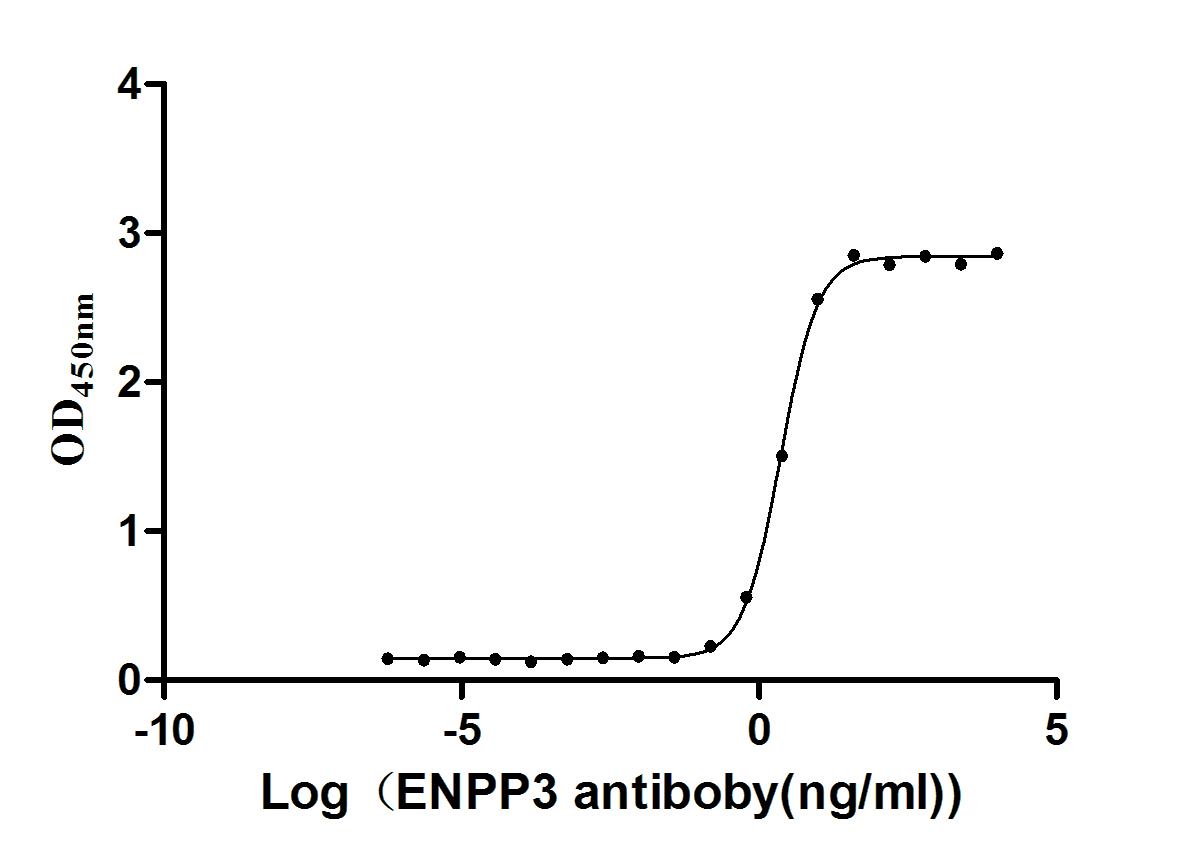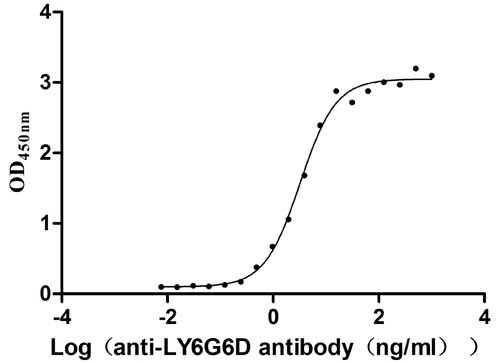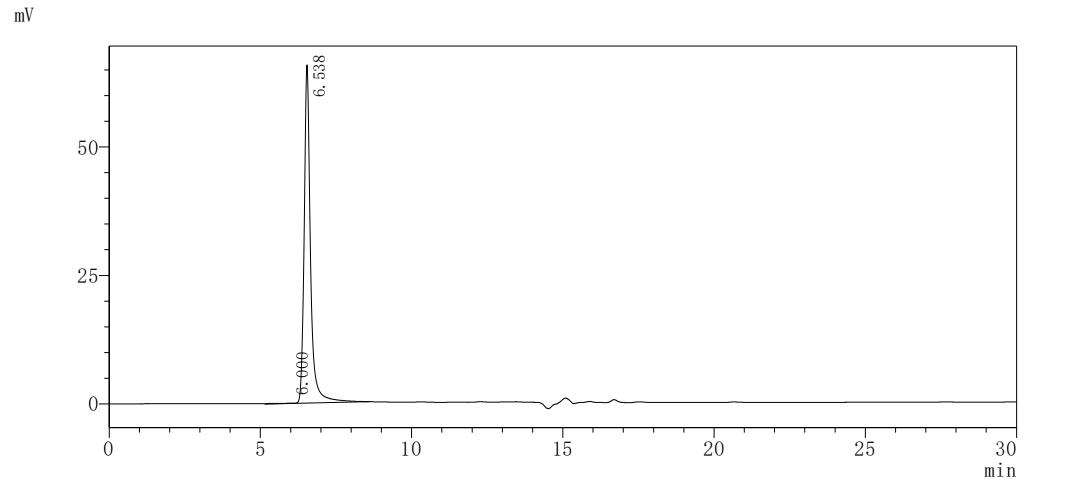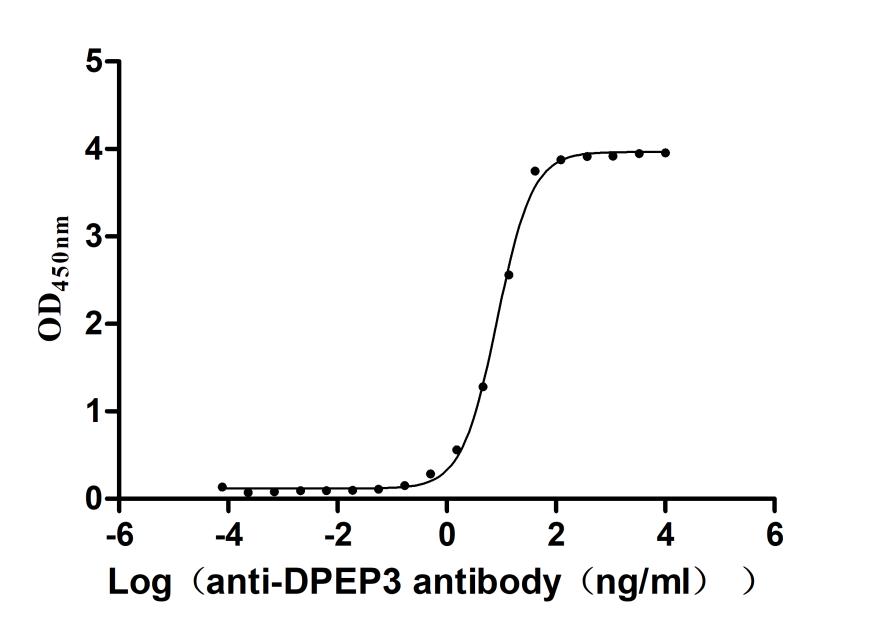Recombinant Caenorhabditis elegans Cell death protein 4 (ced-4), partial
-
中文名稱:Recombinant Caenorhabditis elegans Cell death protein 4(ced-4),partial
-
貨號:CSB-YP335545CXY
-
規(guī)格:
-
來源:Yeast
-
其他:
-
中文名稱:Recombinant Caenorhabditis elegans Cell death protein 4(ced-4),partial
-
貨號:CSB-EP335545CXY
-
規(guī)格:
-
來源:E.coli
-
其他:
-
中文名稱:Recombinant Caenorhabditis elegans Cell death protein 4(ced-4),partial
-
貨號:CSB-EP335545CXY-B
-
規(guī)格:
-
來源:E.coli
-
共軛:Avi-tag Biotinylated
E. coli biotin ligase (BirA) is highly specific in covalently attaching biotin to the 15 amino acid AviTag peptide. This recombinant protein was biotinylated in vivo by AviTag-BirA technology, which method is BriA catalyzes amide linkage between the biotin and the specific lysine of the AviTag.
-
其他:
-
中文名稱:Recombinant Caenorhabditis elegans Cell death protein 4(ced-4),partial
-
貨號:CSB-BP335545CXY
-
規(guī)格:
-
來源:Baculovirus
-
其他:
-
中文名稱:Recombinant Caenorhabditis elegans Cell death protein 4(ced-4),partial
-
貨號:CSB-MP335545CXY
-
規(guī)格:
-
來源:Mammalian cell
-
其他:
產品詳情
-
純度:>85% (SDS-PAGE)
-
基因名:ced-4
-
Uniprot No.:
-
別名:ced-4; C35D10.9; Cell death protein 4
-
種屬:Caenorhabditis elegans
-
蛋白長度:Partial
-
蛋白標簽:Tag?type?will?be?determined?during?the?manufacturing?process.
The tag type will be determined during production process. If you have specified tag type, please tell us and we will develop the specified tag preferentially. -
產品提供形式:Lyophilized powder
Note: We will preferentially ship the format that we have in stock, however, if you have any special requirement for the format, please remark your requirement when placing the order, we will prepare according to your demand. -
復溶:We recommend that this vial be briefly centrifuged prior to opening to bring the contents to the bottom. Please reconstitute protein in deionized sterile water to a concentration of 0.1-1.0 mg/mL.We recommend to add 5-50% of glycerol (final concentration) and aliquot for long-term storage at -20℃/-80℃. Our default final concentration of glycerol is 50%. Customers could use it as reference.
-
儲存條件:Store at -20°C/-80°C upon receipt, aliquoting is necessary for mutiple use. Avoid repeated freeze-thaw cycles.
-
保質期:The shelf life is related to many factors, storage state, buffer ingredients, storage temperature and the stability of the protein itself.
Generally, the shelf life of liquid form is 6 months at -20°C/-80°C. The shelf life of lyophilized form is 12 months at -20°C/-80°C. -
貨期:Delivery time may differ from different purchasing way or location, please kindly consult your local distributors for specific delivery time.Note: All of our proteins are default shipped with normal blue ice packs, if you request to ship with dry ice, please communicate with us in advance and extra fees will be charged.
-
注意事項:Repeated freezing and thawing is not recommended. Store working aliquots at 4°C for up to one week.
-
Datasheet :Please contact us to get it.
靶點詳情
-
功能:Component of the egl-1, ced-9, ced-4 and ced-3 apoptotic signaling cascade required for the initiation of programmed cell death in cells fated to die during embryonic and postembryonic development. During oogenesis, required for germline apoptosis downstream of ced-9 and upstream of ced-3 but independently of egl-1. May regulate germline apoptosis in response to DNA damage, probably downstream of let-60/ras and mpk-1 pathway. Regulates CEP neuron apoptosis in response to high Al(3+) levels. During male tail morphogenesis, promotes apoptosis of the tail-spike cell upstream of ced-3 but independently of egl-1 and ced-9. May play a role in sex-specific cell apoptosis, probably by promoting ced-3-mediated cleavage of sex-determining protein fem-1. During larval development, required for the elimination of transient presynaptic components downstream of egl-1 and ced-9 and upstream of ced-3 apoptotic pathway. Downstream of calreticulin crt-1 and upstream of ced-3 and independently of egl-1 and ced-9, plays a role in the initial steps of axonal regrowth following axotomy. Together with ain-1, a component of the miRNA-induced-silencing complex (miRISC), and probably upstream of ced-3, regulates temporal cell fate patterning during larval development. May play a role in resistance to S.typhimurium-mediated infection.; Plays a major role in programmed cell death. egl-1 binds to and directly inhibits the activity of ced-9, releasing the cell death activator ced-4 from a ced-9/ced-4 containing protein complex and allowing ced-4 to induce caspase ced-3 autoproteolytic cleavage and activation. Also forms a holoenzyme with processed ced-3 enhancing ced-3 activity.; Prevents programmed cell death.
-
基因功能參考文獻:
- A protein interaction cascade involving EGL-1, CED-9, CED-4, and CED-3 results in the activation of the key cell death protease CED-3, which is tightly controlled by multiple positive and negative regulators. PMID: 27516615
- a working model in which two molecules of CED-3 zymogen, through specific recognition, are forced into the hutch of the CED-4 apoptosome, consequently undergoing dimerization and autocatalytic maturation PMID: 24065769
- CED-4 caspase plays a role in axon repair. PMID: 22629231
- CED-9 associates with the outer mitochondrial membrane within distinct foci that do not overlap with CED-4 PMID: 21886181
- Genetic evidence confirmed that apoptosis induced by loss of ifg-1 p170 mRNA was caspase (ced-3) and apoptosome (ced-4/Apaf-1) dependent. PMID: 21909434
- The structure of the CED-4 apoptosome reveals shared principles for the NB-ARC family of AAA(+) ATPases and suggests a mechanism for the activation of CED-3. PMID: 20434985
- Loss of function of pvl-5 gene leads to the activation of a ced-3-dependent, ced-4-independent form of programmed cell death. PMID: 15238520
- CED-4 forms a 2 : 2 heterotetrameric complex with CED-9 until specifically displaced by Caenorhabditis elegans, but not mammalian, BH3-only proteins. PMID: 16167070
- the crystal structure of the CED-4-CED-9 complex at 2.6 A resolution, and a complete reconstitution of the CED-3 activation pathway using homogeneous proteins of CED-4, CED-9 and EGL-1 PMID: 16208361
- CED-9 inhibits CED-4-mediated activation of CED-3 by sequestering CED-4 dimer from further dimerization PMID: 16294007
- Vaccinia virus replication was significantly enhanced in ced-3, ced-4, ced-9(gf), and egl-1(lf) mutants. PMID: 16537504
- Required in adults during or after hypoxic preconditioning. PMID: 17980592
- These data point to a role for Apaf-1 as a bona fide tumor suppressor. PMID: 18042457
- CED-4 plays a pivotal role in activating apoptosis and restricting cell and nuclear size, thereby determining the appropriate overall size of an animal. PMID: 18635357
顯示更多
收起更多
-
亞細胞定位:Mitochondrion. Cytoplasm, perinuclear region.
-
數據庫鏈接:
Most popular with customers
-
Express system: Mammalian cell
Species: Homo sapiens (Human)
-
Recombinant Human Claudin-6 (CLDN6)-VLPs (Active)
Express system: Mammalian cell
Species: Homo sapiens (Human)
-
Recombinant Human Lymphocyte antigen 6 complex locus protein G6d (LY6G6D) (Active)
Express system: Yeast
Species: Homo sapiens (Human)
-
Recombinant Human C-C chemokine receptor type 9 (CCR9)-VLPs (Active)
Express system: Mammalian cell
Species: Homo sapiens (Human)
-
Recombinant Macaca fascicularis Dipeptidase 3(DPEP3) (Active)
Express system: Mammalian cell
Species: Macaca fascicularis (Crab-eating macaque) (Cynomolgus monkey)



-AC1.jpg)












